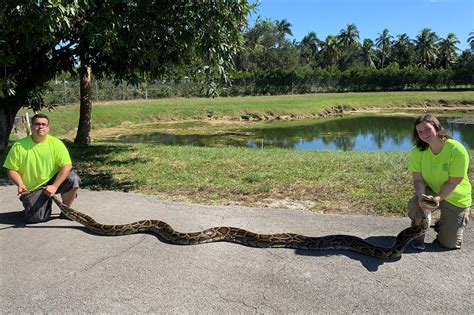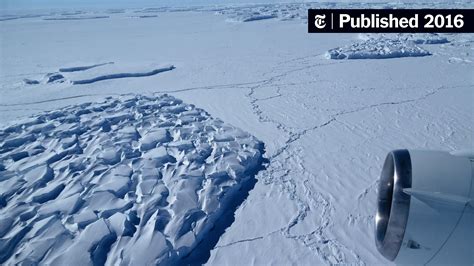
A remote island population of gray seals is experiencing an unprecedented three-decade-long baby boom, potentially linked to a unique and prolonged mating ritual. Researchers studying the seals on Muskeget Island, Massachusetts, have observed consistently high birth rates since the 1990s, indicating a significant departure from typical seal population dynamics. The sustained increase challenges previous assumptions about seal reproductive behavior and raises questions about the long-term ecological impact on the island ecosystem.
Muskeget Island, a small barrier island southwest of Nantucket, serves as one of the largest gray seal breeding colonies in the United States. The island’s isolation and protected status provide a suitable habitat for the seals, allowing researchers to closely monitor their behavior and population trends. The current boom has been particularly surprising because seal populations usually experience fluctuations due to factors such as food availability, disease, and predation. The extended period of growth suggests underlying mechanisms that warrant further investigation.
According to Dr. Kimberly Murray, a marine biologist and lead researcher on the Muskeget Island gray seal project, “We’ve been seeing consistently high birth rates for almost 30 years now, which is unusual for seal populations. It suggests something unique is happening in this environment.” This sustained increase has prompted researchers to delve deeper into the mating habits, health, and environmental factors influencing the seals’ reproductive success.
The unusual mating ritual of the gray seals on Muskeget Island may play a pivotal role in this ongoing baby boom. Unlike other seal populations where mating occurs in a more concentrated timeframe, the Muskeget seals exhibit a prolonged breeding season. This extended period allows more females to become pregnant, contributing to higher overall birth rates.
Dr. Murray explained, “The extended breeding season means that more females have the opportunity to mate and become pregnant. This could be a key factor driving the long-term population growth we’re observing.”
The increase in the gray seal population has several ecological implications for Muskeget Island and the surrounding marine environment. As apex predators, gray seals play a crucial role in regulating fish populations and maintaining the balance of the food web. A significant increase in their numbers could lead to increased competition for resources, potentially impacting other marine species.
The growing seal population could also affect the local fishing industry. Seals consume large quantities of fish, and an increase in their numbers could lead to reduced fish stocks available for commercial fishing. This has raised concerns among fishermen and policymakers, prompting discussions about how to manage the seal population to minimize potential conflicts.
Researchers are employing various methods to study the gray seal population on Muskeget Island, including aerial surveys, tagging, and genetic analysis. Aerial surveys provide valuable data on the overall population size and distribution, while tagging allows researchers to track individual seals’ movements and behavior. Genetic analysis helps to assess the genetic diversity of the population and identify any potential health issues.
One of the key areas of research is the seals’ diet. By analyzing seal scat samples, researchers can determine what types of fish they are consuming and assess the impact on local fish populations. This information is crucial for understanding the ecological role of the seals and predicting the potential consequences of their population growth.
Another focus of the research is the health of the seals. Researchers are monitoring the seals for signs of disease and malnutrition, which could limit population growth. They are also studying the impact of environmental contaminants on the seals’ health. Muskeget Island is located in a region with a history of industrial activity, and the seals may be exposed to pollutants that could affect their reproductive success.
The long-term implications of the gray seal baby boom on Muskeget Island remain uncertain. While the increase in the seal population has some positive aspects, such as contributing to the overall biodiversity of the region, it also poses potential challenges for the local ecosystem and fishing industry. Effective management strategies are needed to ensure the long-term health and sustainability of the seal population and the surrounding marine environment.
One potential management strategy is to implement measures to control the seal population. This could include culling or relocation. However, these measures are controversial and raise ethical concerns. Another approach is to focus on managing the seals’ habitat and food resources. This could involve protecting important fish spawning grounds and reducing pollution in the marine environment.
Ultimately, the success of any management strategy will depend on a thorough understanding of the gray seal population and its interactions with the surrounding ecosystem. Ongoing research is essential for informing effective management decisions and ensuring the long-term health and sustainability of Muskeget Island and its marine environment.
The gray seal population boom on Muskeget Island is a complex ecological phenomenon with far-reaching implications. The unique mating ritual, combined with favorable environmental conditions, has led to an unprecedented increase in the seal population. While the seals play an important role in the marine ecosystem, their growing numbers could also pose challenges for other species and the local fishing industry. Further research and effective management strategies are needed to ensure the long-term health and sustainability of the seal population and the surrounding environment.
In-depth Analysis and Background Information:
The gray seal (Halichoerus grypus), also known as the Atlantic grey seal and the horsehead seal, is a large seal found on the coasts of the North Atlantic Ocean. It is the only species classified in the genus Halichoerus. Gray seals are known for their distinctive appearance, with males typically having a larger size and a more prominent nose than females. They are highly adaptable animals, capable of thriving in a wide range of marine environments, from rocky coastlines to sandy beaches.
Gray seals are apex predators, meaning they are at the top of the food chain. Their diet consists primarily of fish, but they also consume crustaceans, squid, and seabirds. Seals play a crucial role in regulating fish populations and maintaining the balance of the marine ecosystem. They are also an important food source for other predators, such as sharks and killer whales.
The gray seal population in the North Atlantic has experienced significant fluctuations over the past century. In the early 20th century, seal populations were severely depleted due to hunting. However, with the implementation of conservation measures, such as hunting restrictions and the establishment of protected areas, seal populations have rebounded in recent decades.
Muskeget Island, located southwest of Nantucket, Massachusetts, is a critical breeding ground for gray seals in the United States. The island’s isolation and protected status provide a safe haven for the seals, allowing them to breed and raise their young without disturbance. The island’s sandy beaches and shallow waters offer ideal conditions for seals to haul out and bask in the sun.
The Muskeget Island gray seal population has been the subject of ongoing research for several decades. Researchers have been studying the seals’ behavior, diet, health, and population dynamics to better understand their role in the marine ecosystem. The current baby boom has sparked renewed interest in the Muskeget Island seal population, as it represents a significant departure from typical seal population trends.
The prolonged mating ritual observed in the Muskeget Island seals is a key factor contributing to the baby boom. Unlike other seal populations where mating occurs over a relatively short period, the Muskeget seals exhibit an extended breeding season. This prolonged period allows more females to become pregnant, leading to higher overall birth rates.
The reasons for the extended breeding season are not fully understood. One possibility is that the environmental conditions on Muskeget Island are particularly favorable for seal reproduction. The island’s abundant food resources and protected status may allow the seals to maintain their reproductive activity for a longer period.
Another possibility is that the genetic makeup of the Muskeget Island seals has evolved to favor a prolonged breeding season. Over time, seals with a longer breeding season may have had a reproductive advantage, leading to the selection of this trait in the population.
The increase in the gray seal population on Muskeget Island has several ecological implications. As apex predators, the seals play a crucial role in regulating fish populations. An increase in their numbers could lead to increased competition for resources, potentially impacting other marine species.
One of the primary concerns is the impact on local fish populations. Seals consume large quantities of fish, and an increase in their numbers could lead to reduced fish stocks available for commercial fishing. This has raised concerns among fishermen, who fear that the growing seal population could negatively impact their livelihoods.
Researchers are studying the seals’ diet to assess the impact on local fish populations. By analyzing seal scat samples, they can determine what types of fish the seals are consuming and estimate the amount of fish being removed from the ecosystem. This information is crucial for understanding the ecological role of the seals and predicting the potential consequences of their population growth.
Another concern is the potential for increased competition between seals and other marine predators. Seals compete with seabirds and other marine mammals for food resources. An increase in the seal population could lead to increased competition, potentially impacting the populations of these other species.
The growing seal population could also affect the health of the seals themselves. As the population increases, the seals may become more susceptible to disease and malnutrition. This could limit population growth and potentially lead to population declines.
Researchers are monitoring the seals for signs of disease and malnutrition. They are also studying the impact of environmental contaminants on the seals’ health. Muskeget Island is located in a region with a history of industrial activity, and the seals may be exposed to pollutants that could affect their reproductive success.
The long-term implications of the gray seal baby boom on Muskeget Island remain uncertain. While the increase in the seal population has some positive aspects, such as contributing to the overall biodiversity of the region, it also poses potential challenges for the local ecosystem and fishing industry.
Effective management strategies are needed to ensure the long-term health and sustainability of the seal population and the surrounding marine environment. One potential management strategy is to implement measures to control the seal population. This could include culling or relocation. However, these measures are controversial and raise ethical concerns.
Culling involves killing a certain number of seals to reduce the population size. This method has been used in other regions to manage seal populations, but it is often met with strong opposition from animal rights activists and environmental groups.
Relocation involves moving seals to other areas where they may be less likely to cause problems. This method is less controversial than culling, but it can be expensive and may not be effective in the long term.
Another approach is to focus on managing the seals’ habitat and food resources. This could involve protecting important fish spawning grounds and reducing pollution in the marine environment. This approach is less controversial than culling or relocation, but it may be more difficult to implement.
Protecting fish spawning grounds can help to ensure that the seals have an adequate food supply. This can be achieved by establishing marine protected areas and implementing fishing regulations that limit the catch of certain fish species.
Reducing pollution in the marine environment can help to improve the health of the seals and other marine life. This can be achieved by reducing the discharge of pollutants from industrial and agricultural sources.
Ultimately, the success of any management strategy will depend on a thorough understanding of the gray seal population and its interactions with the surrounding ecosystem. Ongoing research is essential for informing effective management decisions and ensuring the long-term health and sustainability of Muskeget Island and its marine environment.
The gray seal population boom on Muskeget Island is a complex ecological phenomenon with far-reaching implications. The unique mating ritual, combined with favorable environmental conditions, has led to an unprecedented increase in the seal population. While the seals play an important role in the marine ecosystem, their growing numbers could also pose challenges for other species and the local fishing industry. Further research and effective management strategies are needed to ensure the long-term health and sustainability of the seal population and the surrounding environment.
Expanded Context:
The situation on Muskeget Island isn’t happening in isolation. Marine ecosystems worldwide are facing increasing pressures from climate change, pollution, and overfishing. Understanding how apex predators like gray seals respond to these pressures is crucial for effective conservation efforts. The Muskeget Island population offers a unique opportunity to study long-term population dynamics in a relatively isolated environment. This research could provide valuable insights applicable to other seal populations and marine ecosystems around the globe.
The debate surrounding seal management is often heated, pitting conservationists against fishermen and other stakeholders. Finding a balance between protecting seal populations and mitigating their impact on other resources is a complex challenge. This requires a collaborative approach involving scientists, policymakers, fishermen, and the public. Open communication and transparent decision-making are essential for building trust and finding solutions that benefit all parties involved.
The Muskeget Island situation also highlights the importance of long-term ecological monitoring. The 30-year data set collected by researchers provides a valuable baseline for understanding how seal populations respond to environmental changes. Continued monitoring is essential for tracking the long-term impact of the baby boom and for adapting management strategies as needed.
Furthermore, the research on Muskeget Island underscores the interconnectedness of marine ecosystems. The health of the seal population is directly linked to the health of the fish stocks and the overall quality of the marine environment. Addressing the challenges facing the Muskeget Island ecosystem requires a holistic approach that considers all aspects of the marine environment.
Direct Quotes:
- “We’ve been seeing consistently high birth rates for almost 30 years now, which is unusual for seal populations. It suggests something unique is happening in this environment.” – Dr. Kimberly Murray
- “The extended breeding season means that more females have the opportunity to mate and become pregnant. This could be a key factor driving the long-term population growth we’re observing.” – Dr. Kimberly Murray
Frequently Asked Questions (FAQ):
Q1: What is causing the gray seal baby boom on Muskeget Island?
A1: Researchers believe the primary factor driving the baby boom is a unique and prolonged mating ritual among the gray seals on Muskeget Island. Unlike other seal populations with shorter breeding seasons, the Muskeget seals mate over an extended period, allowing more females to become pregnant and contribute to higher birth rates. Favorable environmental conditions on the island likely also play a role.
Q2: How long has this baby boom been going on?
A2: The consistently high birth rates have been observed for almost 30 years, starting in the 1990s. This sustained increase is unusual for seal populations, which typically experience fluctuations due to various environmental factors.
Q3: What are the potential ecological impacts of the growing seal population?
A3: As apex predators, the increasing gray seal population can impact fish populations through increased consumption, potentially affecting local fish stocks. This can lead to competition with other marine species and potentially disrupt the balance of the island’s ecosystem. There is also concern on how the growing population impacts the fishing industry.
Q4: What measures are being taken to study the Muskeget Island gray seals?
A4: Researchers are using several methods, including aerial surveys to estimate population size and distribution, tagging to track individual seal movements and behavior, and genetic analysis to assess population health and diversity. Additionally, they analyze seal scat samples to determine the seals’ diet and its impact on fish populations.
Q5: What management strategies are being considered to address the increasing seal population?
A5: Potential management strategies include population control measures like culling or relocation, although these are controversial. Another approach focuses on managing the seals’ habitat and food resources by protecting fish spawning grounds and reducing pollution in the marine environment. The choice of strategy requires careful consideration of ecological impacts and ethical concerns.









